A few weeks back my friend Amy (a librarian at Sydney Uni) told me about an upcoming event where the NSW State Librarian would be speaking about how libraries connect communities, now and in the future. It was at the Chau Chak Wing Museum not far from our house, so last week I went over to see the talk. The first thing I noticed was that the audience was mostly women! It’s sad that interest in libraries seems to be partly gendered.
Dr. Caroline Butler-Bowden spoke for nearly an hour. She started by citing this editorial from last year: “The Opera House is spectacular, but it’s not Sydney’s best building.” Instead, Gary Nunn suggests, the Mitchell Reading Room of the State Library is “one of Sydney’s most breathtaking buildings.” And not just because it’s beautiful, but because “public libraries reflect what a city thinks about the importance of its public service users.” They are, after all, one of the only places you can go and hang out without the expectation of spending money.
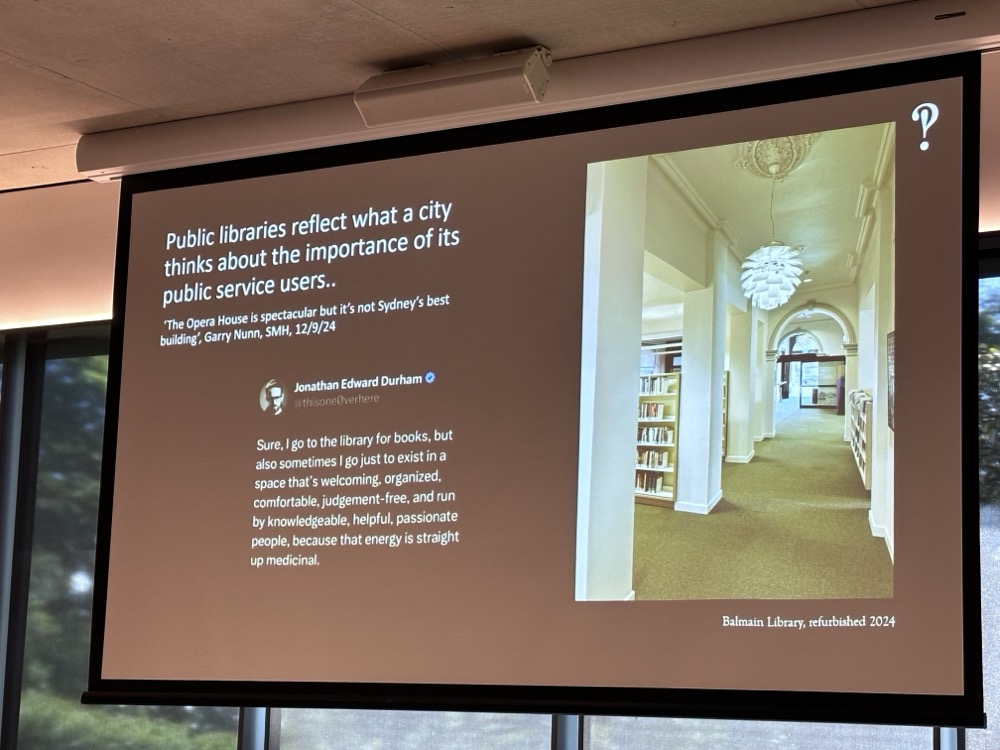
She also quoted a tweet from the writer Jonathan Edward Durham that says:
Sure, I go to the library for books, but also sometimes I go just to exist in a space that’s welcoming, judgement-free, and run by knowledgeable, helpful, passionate people, because that energy is straight up medicinal.
She emphasised that libraries aren’t just about stacks of books, but about creating a space where everyone is welcome. She shared results from a survey they ran with hundreds of anecdotal data points from users talking about how much they love their library. New South Wales has over 360 public libraries across the state, and usage is always growing. She shared several stats with us…
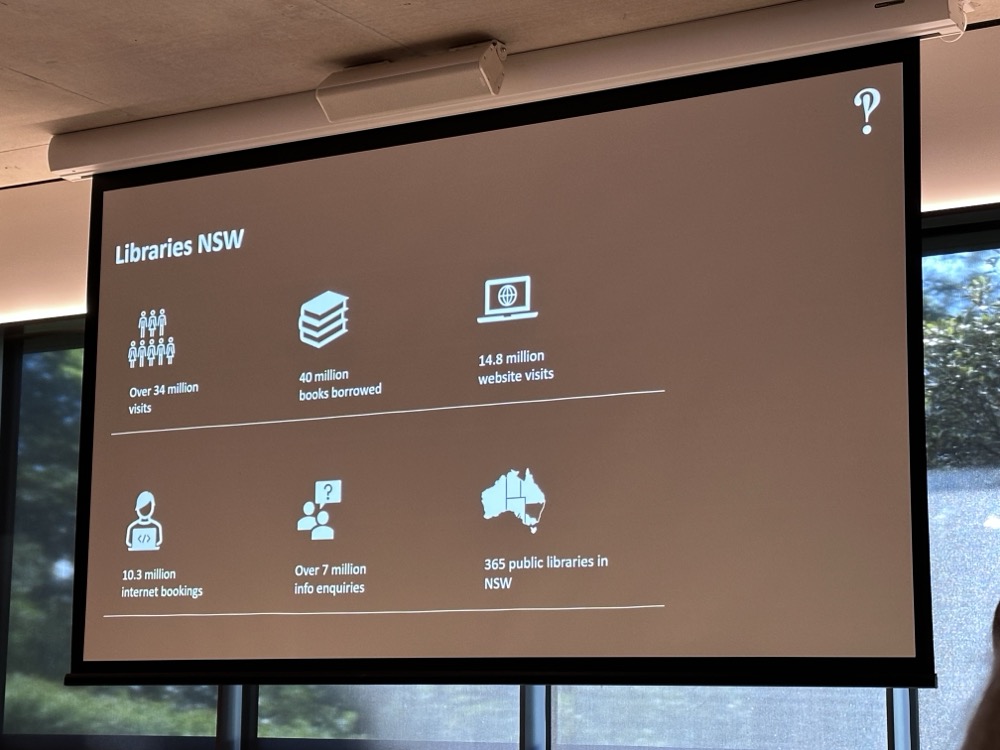
Across NSW last year, there were over 34 million visits to public libraries and 40 million books borrowed. There were 14.8 million website visits and 10.3 million internet bookings. Library staff dealt with over 7 million information enquiries. She also explained a bit the relationship between the State Library and local libraries. The State Library provides some funding and grants each year to local libraries, as well as professional development for librarians. They also provide guidance and advice for local libraries, as well as sending thousands of books in foreign languages for regional readers.
The State Library also works with the government on policy, and Dr. Butler-Bowden specifically referenced an incident last year when a Sydney suburb tried to ban books about same-sex parenting from their council’s libraries. Not only did the community fight back, but the Library worked with NSW Arts Minister John Graham on a response. Graham told the council that the ban could affect their funding, and that it violated the Library Act of 1939. “It’s up to readers to choose what they want to read,” Graham said. Thankfully the ban was rescinded within two weeks.
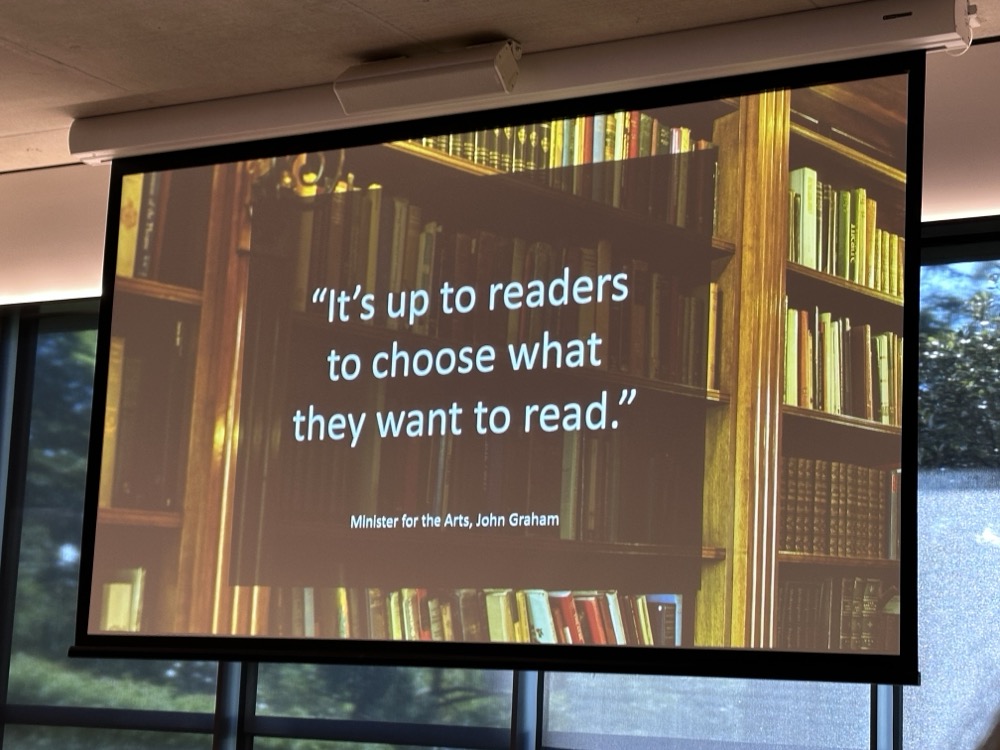
The final part of Dr. Butler-Bowden’s talk was about libraries in the context of placemaking. Places, she explained, are spaces that people have made meaningful. They have a strong sense of identity and character as well as diverse social offerings and opportunities for social interaction. They are welcoming, inclusive, diverse, green, and beautiful.
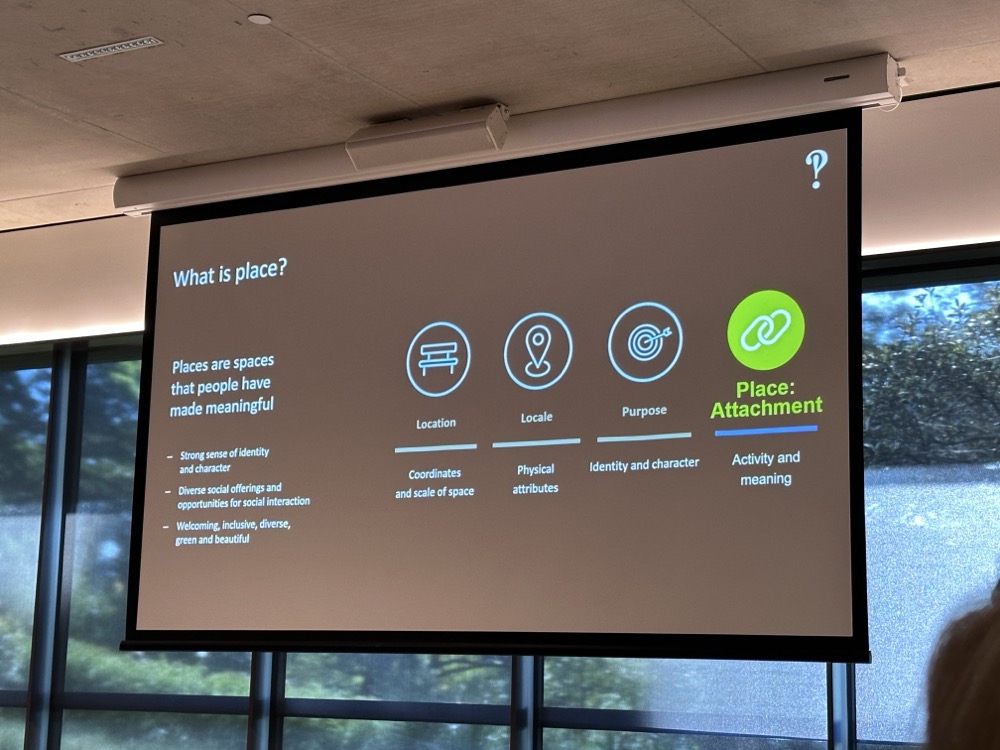
So how does that inform the strategy for libraries going forward? One aspect I found really interesting was creating a precinct. Institutions like the State Library are not islands; they exist in a context of other cultural institutions in Sydney. She spoke about partnering with other libraries, museums, and galleries, as well as groups like the Sydney Writers Festival, Mardi Gras, and the Sydney Film Festival. I was also interested to hear that she meets a couple times a year with her State Librarian counterparts in other parts of Australia to share updates and ideas.
She finished by mentioning that the State Library of NSW will turn 200 years old next year, and highlighted the refurbishment that’s currently happening. It will add more seating and study areas as well as upgrading the entrance, cafe, and bookshop to be more welcoming and inviting. It’s going to make for a few chaotic months as everyone is packed into the Mitchell building, but hopefully the improvements will set the Library in good stead for the future.

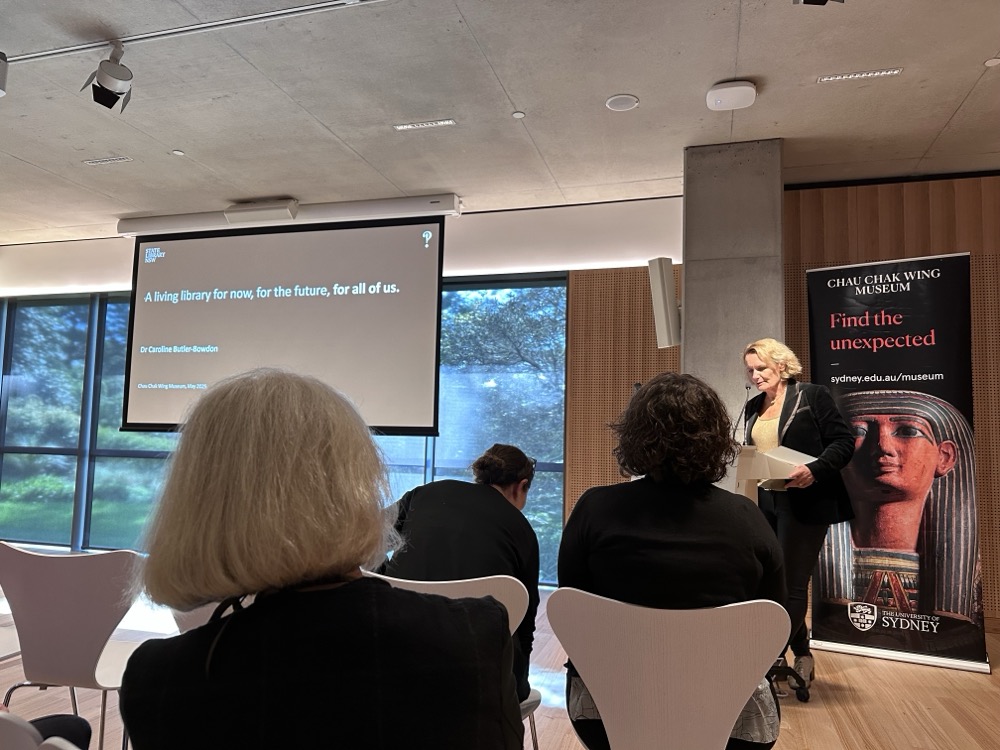
Leave a Reply